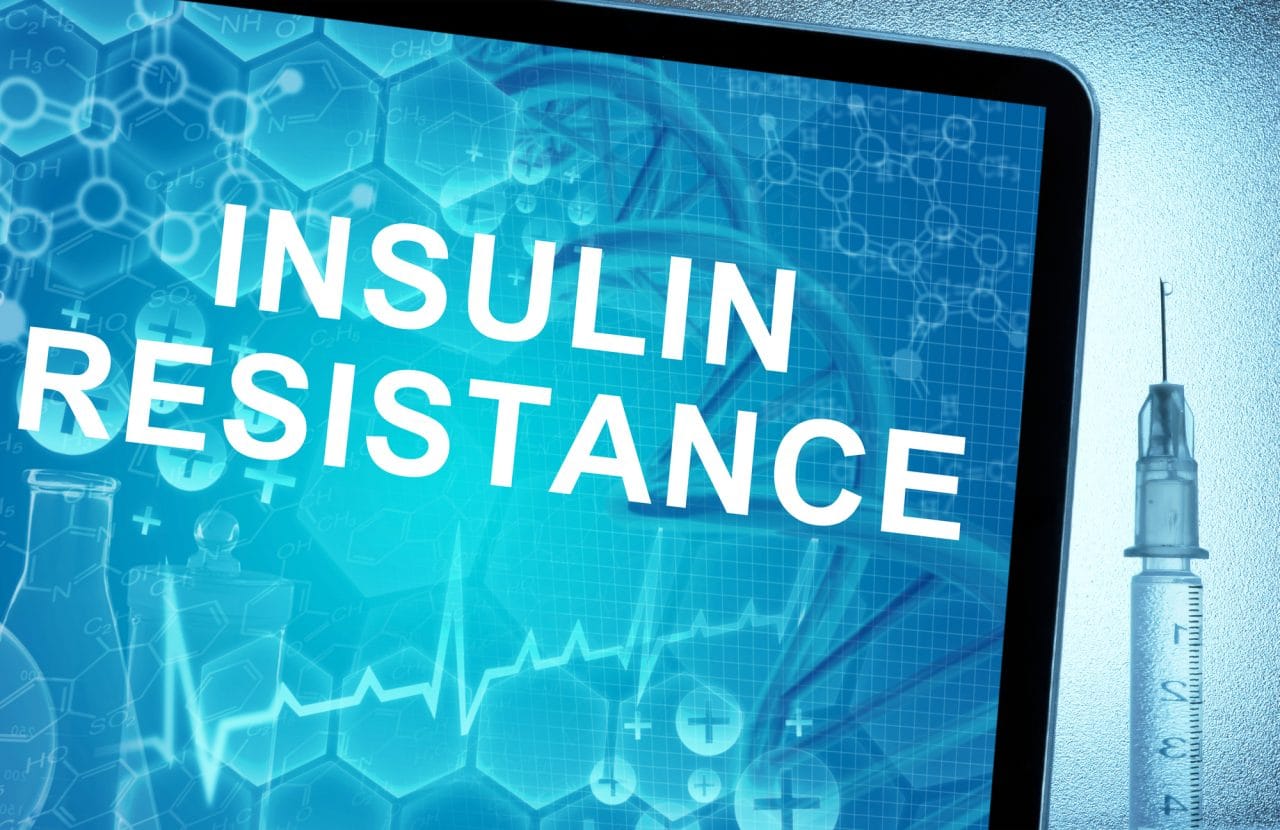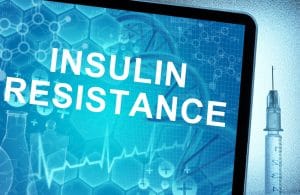
 One of the most important screening tests we’ve been using for years at The Lamkin Clinic is the fasting insulin test. Insulin is the hormone produced by the pancreas to drive glucose (blood sugar) into the cells to produce energy. The test simply involves an overnight fast, then a blood test the next morning to check insulin levels. In a fasting state (no food or drink except water), one should not produce much insulin. Optimal levels are under 5 uIU/ml. A value above 5 indicates there are changes occurring at the cellular level that increase risk for diabetes, and this usually starts with and progresses toward weight gain.
One of the most important screening tests we’ve been using for years at The Lamkin Clinic is the fasting insulin test. Insulin is the hormone produced by the pancreas to drive glucose (blood sugar) into the cells to produce energy. The test simply involves an overnight fast, then a blood test the next morning to check insulin levels. In a fasting state (no food or drink except water), one should not produce much insulin. Optimal levels are under 5 uIU/ml. A value above 5 indicates there are changes occurring at the cellular level that increase risk for diabetes, and this usually starts with and progresses toward weight gain.
It’s equivalent in power to the predictive tests assessing chronic inflammation and elevated blood lipids and the relation to risk for heart disease. High lipids (i.e. lipoprotein (a), LDL, and triglycerides) and systemic vascular inflammation (HS-CRP, myeloperoxidase, and LpPla2) in combination are a recipe for development of plaque in the arteries, which can build up and obstruct blood flow to the heart or brain or induce a clot that can lead to a heart attack or stroke. Just as elevated inflammation/lipids markers predict heart disease risk, an elevated fasting insulin predicts diabetes risk.
In addition to the fasting insulin, a fasting glucose and an A1C provide a more complete picture of overall insulin sensitivity and blood sugar control.
Years or even decades preceding development of type II diabetes, the fasting insulin will begin to insidiously increase. It’s a silent indicator that the cells and tissues, particularly in the muscle, fat, and liver are becoming resistant to insulin. I discussed this process in detail in part one and part two of the keys to reversing diabetes. We’ve been able to provide a great deal of insight to our patients and have prevented many cases of diabetes by encouraging a few changes, such as addressing diet and lifestyle, sleep, hormones, and exercise.
A diet high in sugars and starches, stress, sleep problems, decline of age-related hormones like testosterone and growth hormone, micronutrient deficiencies, sedentary lifestyle, and genetic predisposition all play a role in the development of insulin resistance.
One of the problems with having insulin resistance is that it leads to a state of weight-loss resistance. This is to a degree relating to its severity. Having insulin resistance quite simply makes it harder to lose weight and easy to gain weight. It leads to exaggerated insulin and blood sugar spikes in response to food, mainly starches and sugars. It leads to an overcompensation in insulin response which leads to a relative drop in blood sugar, then more hunger, and more frequent desire to eat as the blood sugar falls in between meals.
Many people with insulin resistance can exercise and diet and frustratingly lose very little body fat. Understandably they become frustrated and go back to their previous diet and sedentary lifestyle, often eventually leading to diabetes. This is what I call the insulin resistance hump. It’s essentially a metabolic barrier to effective weight (fat) loss.
In our experience, knowing the frustration that can occur in weight loss resistance, we focus in on rapid reversal. Two methods stand out as the most efficient and effective methods of reversing insulin resistance: the HCG program and cycling ketogenesis. In fact, we often advocate alternating both as part of our broad strategy until optimal body fat percentage is achieved.
The HCG diet has been around for many years and most recently has been studied by Dr. Oz, who did a research study showing that the HCG diet helps significantly preserve muscle compared to an equivalent lower calorie diet alone. In short, the HCG program is a 30- to 40-day period in which in the individual is consuming a lower calorie diet and taking low dose amounts of a hormone called HCG. HCG stands for human chorionic gonadotropin and is the hormone of pregnancy, although we all usually have it at low levels outside of pregnancy.
In combination with a low calorie diet, it appears to help preserve muscle and shift the body towards burning body fat. It also appears to lower cravings by helping the body tap in to body fat stores as a stable source of fuel for the metabolic reactions the body needs to create energy. Most patients report very little hunger after the first few days and are getting plenty of protein and vegetables in their diet to support health. It essentially tricks the body into going into fat burning mode. In our observation, it has helped reverse insulin resistance which helps reverse the underlying problem of easy weight gain/weight-loss resistance. Then once the individual has lost the weight and reversed insulin resistance, they can maintain a healthy diet.
Ketogenesis is the process of shifting the dependence for metabolic energy from burning carbohydrates as the primary fuels source to utilizing stored and dietary fat as the primary energy source. By cycling into and out of ketogenesis, the right signals are sent to the cells and tissues to upregulate insulin receptors, essentially reversing insulin resistance. The key to generating ketones is in shifting consumed macronutrients from primarily carbohydrates to more healthy fats. The shift is based on percentage of consumed calories, not percentage of what is one your plate. So 60:20:20 is one example. Sixty percent of calories from fat, 20 percent from protein and 20 percent from non-sugar/starch carbohydrates. One problem many people make is they eliminate vegetables on this diet. They usually are consuming 50:50 protein and fat which may work in the short term but eventually leads to plateau. By consuming a 60:20:20 ratio of macronutrients, stored fat becomes the primary fuel source. This is a wonderful thing as one then begins to lose body fat even during sedentary activity (like sleep!)
There are many paths to reversing insulin resistance and losing weight, but cycling ketogenesis and the HCG diet are two that have a proven track records even for many of the most weight- loss resistant patients.
